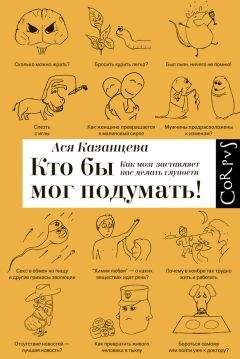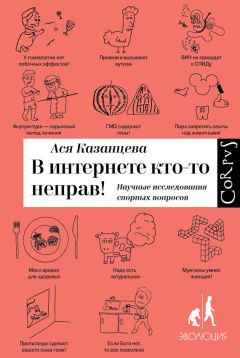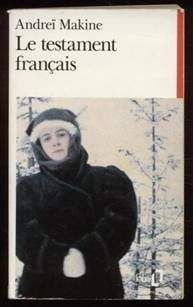6 Игонин А. Л., Тузикова Ю. Б. Героиновая наркомания, развивающаяся у больных с различными особенностями личности (условия формирования, клиническая картина, терапевтический подход) // Наркология. 2002. № 1.
Trezza V. et al. Nucleus Accumbens μ-Opioid Receptors Mediate Social Reward // The Journal of Neuroscience. 27 April 2011. Vol. 31. No. 17. P. 6362–70.
8 De Vries T. J., Shippenberg T. S. Neural Systems Underlying Opiate Addiction // The Journal of Neuroscience. 1 May 2002. Vol. 22. No. 9. P. 3321–3325.
9 Sporer K. A. Acute Heroin Overdose // Annals of Internal Medicine. 6 April 1999. Vol. 130. No. 7. P. 584–590.
10 Siegel S. Pavlovian Conditioning and Heroin Overdose: Reports by Overdose Victims // Bulletin of the Psychonomic Society. September 1984. Vol. 22. No. 5. Р. 428–430.
11 Smyth B. et al. Years of Potential Life Lost Among Heroin Addicts 33 Years After Treatment // Preventive Medicine. April 2007. Vol. 44. No. 4. P. 369–374.
12 http://demoscope.ru/weekly/2004/0181/analit03.php — отчет о смертности наркоманов в Приморье.
13 http://www.unodc.org/pdf/publications/report_2004-03-15_1_ru.pdf — официальная позиция ВОЗ и ООН по поводу использования метадона.
14 http://www.emcdda.europa.eu/stats12/hsrtab1 — применение метадоновой терапии в Европе.
15 http://medportal.ru/mednovosti/news/2006/05/18/methadone/ — Онищенко о метадоне.
16 http://medportal.ru/mednovosti/news/2011/02/16/hivther/ — Голикова о метадоне.
Глава 5. Как женщина превращается в малиновый сироп
1 Zak P. J. et al. Oxytocin Increases Generosity in Humans // PLoS ONE. 2007. 2 (11): e1128.
2 http://www.moralmolecule.com/ — сайт Пола Зака, посвященный окситоцину.
3 Goodman H. M. Basic Medical Endocrinology, 4th ed. Academic Press, NewYork, 2009.
4 http://elementy.ru/news/431920 — научно-популярная статья Александра Маркова о нематоцине — пептиде, похожем на окситоцин и принимающем участие в регуляции поведения у круглых червей.
5 The Roles of Vasopressin and Oxytocin in Memory Processing / Edited by Barbara B. McEwen // Advances in Pharmacology. 2004. Vol. 50. P. 1–740.
6 Niven C. A., Murphy-Black T. Memory for Labor Pain: A Review of the Literature // Birth. December 2000. Vol. 27. No. 4. P. 244–253.
7 Gordon I. et al. Oxytocin and the Development of Parenting in Humans // Biological Psychiatry. 15 August 2010. Vol. 68. No. 4. P. 377–382.
8 Bick J., Dozier M. Mothers’ Concentrations of Oxytocin Following Close, Physical Interactions with Biological and Non-biological Children // Developmental Psychobiology. January 2010. Vol. 52. No. 1. Р. 100–107.
9 Naber F. et al. Intranasal Oxytocin Increases Fathers’ Observed Responsiveness During Play with Their Children: A Double-Blind Within-Subject Experiment // Psychoneuroendocrinology. November 2010. Vol. 35. No. 10. P. 1583–1586.
10 Liu Y, Wang Z. X. Nucleus Accumbens Oxytocin and Dopamine Interact to Regulate Pair Bond Formation in Female Prairie Voles // Neuroscience. 15 October 2003. Vol. 121. No. 3. P. 537–544.
11 Aron A. et al. Reward, Motivation, and Emotion Systems Associated With Early-Stage Intense Romantic Love // Journal of Neurophysiology. 2005. Vol. 94. P. 327–337.
12 Handbook of Parenting. Vo l. 2. Biology and Ecology of Parenting / edited by Marc H. Bornstein. Lawrence Erlbaum Associates, Inc., Publishers. 2002.
13 Brody S., Kruger T. H. C. The Post-Orgasmic Prolactin Increase Following Intercourse Is Greater Than Following Masturbation and Suggests Greater Satiety // Biological Psychology. 2006. Vol. 71. P. 312–315.
14 Durante K. M. et al. Ovulation, Female Competition, and Product Choice: Hormonal Influences on Consumer Behavior // Journal of Consumer Research. April 2011. Vol. 37. No. 6.
15 Miller G. et al. Ovulatory Cycle Effects on Tip Earnings by Lap Dancers: Economic Evidence for Human Estrus? // Evolution and Human Behavior. 2007. Vol. 28. P. 375–381.
16 Dickerson L. M. et al. Premenstrual Syndrome // American Family Physician. 15 April 2003. Vol. 67. No. 8. P. 1743–1752.
17 Timby E. Allopregnanolone Effects in Women: Clinical Studies in Relation to the Menstrual Cycle, Premenstrual Dysphoric Disorder and Oral Contraceptive Use. Doctoral thesis. 2011. Umeå University, Sweden.
18 Molina-HernÁndez M., TÉllez-AlcÁntara N. P. Antidepressant-Like Actions of Pregnancy, and Progesterone in Wistar Rats Forced to Swim // Psychoneuroendocrinology. July 2001. Vol. 26. No. 5. P. 479–491.
19 Mulder E. J. H. et al. Prenatal Maternal Stress: Effects on Pregnancy and the (Unborn) Child // Early Human Development. December 2002. Vol. 70. No. 1–2. P. 3–14.
Глава 6. Мужчины предрасположены к изменам?
1 См. например: Жуков Д. А. Поведение женщины и поведение мужчины. Биологические основы. — СПб.: ИД «ПРТ», 2012. — 298 с.
2 Hoffman J. I.et al. Female Fur Seals Show Active Choice for Males That Are Heterozygous and Unrelated // Nature. 22 February 2007. Vol. 445. P. 912–914.
3 Reid J. M. et al. Sex-Specific Differential Survival of ExtraPair and Within-Pair Offspring in Song Sparrows, Melospiza melodia // Proceedings of the Royal Society B: Biological Sciences. 7 November 2011. Vol. 278. No. 1722. P. 3251–3259.
4 Anderson K. G. How Well Does Paternity Confidence Match Actual Paternity? Evidence from Worldwide Nonpaternity Rates // Current Anthropology. June 2006. Vol. 47. No. 3.
5 Kraaijeveld K. et al. Extra-pair Paternity Does Not Result in Differential Sexual Selection in the Mutually Ornamented Black Swan (Cygnus atratus) // Molecular Ecology. June 2004. Vol. 13. No. 6. Р. 1625–1633.
6 Ophir A. G. et al. Social but Not Genetic Monogamy Is Associated with Greater Breeding Success in Prairie Voles // Animal Behaviour. 2008. Vol. 75. P. 1143–1154.
7 Foerster K. et al. Females Increase Offspring Heterozygosity and Fitness Through Extra-Pair Matings // Nature. 16 October 2003. Vol. 425. P. 714–717.
8 Reid J. M. et al. Offspring Fitness Varies with Parental Extra-Pair Status in Song Sparrows, Melospiza melodia // Proceedings of the Royal Society B: Biological Sciences. 7 October 2012. Vol. 279. No. 1744. P. 4078–4086.
9 Scelza B. A. Female Choice and Extra-Pair Paternity in a Traditional Human Population // Biology Letters. 23 December 2011. Vol. 7. No. 6. Р. 889–891.
10 Daly M., Wilson M. I. Whom Are Newborn Babies Said to Resemble? // Ethology and Sociobiology. 1982. Vol. 3. No. 2. P. 69–78.
11 Aragona B. J. et al. A Critical Role for Nucleus Accumbens Dopamine in Partner-Preference Formation in Male Prairie Voles // The Journal of Neuroscience. 15 April 2003. Vol. 23. No. 8. P. 3483–3490.
12 Curtis J. T. et al. Dopamine and Monogamy // Brain Research. 18 December 2006. Vol. 1126. No. 1. P. 76–90.
13 Young L. J. et al. Enhanced Partner Preference in a Promiscuous Species by Manipulating the Expression of a Sing le Gene // Nature. Vol. 429. P. 754–757.
14 Walum H. et al. Genetic Variation in the Vasopressin Receptor 1A Gene (AVPR1A) Associates with Pair-Bonding Behavior in Humans // PNAS. 16 September 2008. Vol. 105. No. 37. Р. 14153–14156.
Глава 7. Секс в обмен на пищу и другие гримасы эволюции
1 Segraves R. T. et al. Bupropion Sustained Release for the Treatment of Hypoactive Sexual Desire Disorder in Premenopausal Women // Journal of Clinical Psychopharmacology. June 2004. Vol. 24. No. 3. Р. 339–342.
2 Goldstat R. et al. Transdermal Testosterone Therapy Improves Well-Being, Mood, and Sexual Function in Premenopausal Women // Menopaus. September 2003. Vol. 10. No. 5.
Р. 390–398.
3 Basson R. et al. Efficacy and Safety of Sildenafil Citrate in Women with Sexual Dysfunction Associated with Female Sexual Arousal Disorder // Journal of Women’s Health & Gender-Based Medicine. May 2002. Vol. 11. No. 4. P. 367–377.
4 Walter A. et al. Superfetation in man // Australian and New Zealand Journal of Obstetrics and Gynaecology. Vol. 15. P. 240–246.
5 Hayase Y., Liaw K. L. Factors on Polygamy in Sub-Saharan Africa: Findings Based on the Demographic and Health Surveys // The Developing Economies. September 1997. Vol. 35. No. 3. Р. 293–327.
6 Levine N. E. and Silk J. B. Why Polyandry Fails: Sources of Instability in Polyandrous Marriages // Current Anthropology.September 1997. Vol. 38. No. 3. Р. 375–398.
7 Lovejoy O. Reexamining Human Origins in Light of Ardipithecus ramidus // Science. 2 October 2009. Vol. 326. No. 5949. Р. 74, 74e1–74e8.
8 Dixson A. F. Observations on the Evolution of the Genitalia and Copulatory Behaviour in Male Primates // Journal of Zoology. November 1987. Vol. 213. No. 3. Р. 423–443.
9 Dixson A. F., Matthew J. Anderson M. J. Sexual Behavior, Reproductive Physiology and Sperm Competition in Male Mammals // Physiology & Behavior. 2004. Vol. 83. P. 361–371.
10 Gallup G. G. et al. The Human Penis as a Semen Displacement Device // Evolution and Human Behavior. July 2003. Vo l. 24. No. 4. P. 277–289.
11 Бурлак С. Происхождение языка. Факты, исследования, гипотезы. — М.: Астрель: Corpus, 2011. — 464 с.
12 Brody S. Body Mass Index But Not Pulse Pressure Is Associated with Lesser Penile — Vaginal Intercourse Frequency in Healthy Young Men // The Journal of Sexual Medicine. May 2010. Vol. 7. No. 5. Р. 1853–1857.
13 Brody S. Alexithymia Is Inversely Associated with Women’s Frequency of Vaginal Intercourse // Archives of Sexual Behavior. February 2003. Vol. 32. No. 1. Р. 73–77.
14 Aurelie Nicholas M. A. et al. A Woman’s History of Vaginal Orgasm is Discernible from Her Walk // The Journal of Sexual Medicine. September 2008. Vol. 5. No. 9. P. 2119–2124.
15 Brody S. Age at First Intercourse Is Inversely Related to Female Cortisol Stress Reactivity // Psychoneuroendocrinology. November 2002. Vol. 27. No. 8. P. 933–943.
16 Brody B. et al. Women Who Prefer Longer Penises Are More Likely to Have Vaginal Orgasms (but Not Clitoral Orgasms): Implications for an Evolutionary Theory of Vaginal Orgasm // The Journal of Sexual Medicine. 2012. Vol. 9. P. 3079–3088.
17 Brody S. The Relative Health Benefits of Different Sexual Activities // The Journal of Sexual Medicine. April 2010. Vol. 7. No. 4. Part 1. P. 1336–1361.
18 Alexander R. B., Trissel D. Chronic Prostatitis: Results of an Internet Survey // Urology. October 1996. Vol. 48. No. 4. P. 568–574.
19 Bradshaw C. S. et al. Etiologies of Nongonococcal Urethritis: Bacteria, Viruses, and the Association with Orogenital Exposure // The Journal of Infectious Diseases. 2006. Vol. 193. No. 3. P. 336–345.
Глава 8. «Химия любви» — о каких веществах идет речь?
1 Schiestl F. P. et al. The Chemistry of Sexual Deception in an Orchid-Wasp Pollination System // Science. 17 October 2003. Vol. 302. No. 5644. Р. 437–438.




